Forest’s Cutting Edge
Forests have been very much in the national news. The New Northern Forest has received a £5.7m ‘vote of confidence’ from government and woodlands are recognised as a key component of using and managing land sustainably in the government’s 25-Year Environment Plan. Internationally, the Food and Agriculture Organisation (FAO) of the United Nations document State of Food and Agriculture places forests at the heart of productive-but-sustainable farming.
BIFoR brings together expertise in natural sciences, social sciences, and the humanities to address the ‘wicked’ complexity underpinning both the FAO call for agricultural transformation and the UK government’s concept of ‘Net Environmental Gain’. We are delighted to announce the first substantive funding for BIFoR in this multi- and interdisciplinary arena: the Leverhulme Trust £1m Doctoral Scholarship Programme, Forest Edge.
Although we are already active in many forested landscapes (see the research highlight overleaf) Forest Edge is our first opportunity to build a 20-PhD cohort – we think the UK’s biggest-ever such cohort – charged with advancing the Institute’s vision by providing linked fundamental science, social science, and cultural research of direct relevance to forested landscapes. The topics for 2018 are:
- Mangrove forest conservation and restoration: what are the keys to success
- Coppice management to reduce nutrient loads in forest streams
- Exploring the desirability of forest landscapes in a natural flood management context
- Young people’s experiences of & learning in urban woodlands: comparing formal & informal ‘Forest Schooling’ in the UK & Peru
- Focus on Cognition: Can forests balance the brain?
- Development and application of novel ecological and environmental proxies based on leaf wax lipids
Soil Sampling
The BIFoR soil team put away their snow shovels and took out the soil corer for the annual spring soil sampling campaign. The team included researchers from the Universities of Birmingham, Gloucestershire and Southampton together with a small army of volunteers from Birmingham and Gloucestershire Universities.
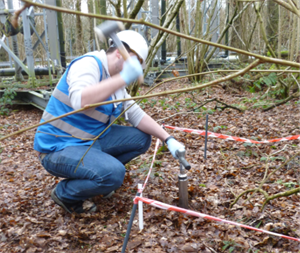
Rare solitary wasp found
A single female of the rarely seen Embolemine wasp, (Embolemus ruddii Westwood, 1883) was found by Liam Crowley, in a pitfall trap deployed at BIFoR FACE. Very few individuals of this species have ever been seen. This record is the first confirmed UK sighting for 20 years, as well as the first in Staffordshire.
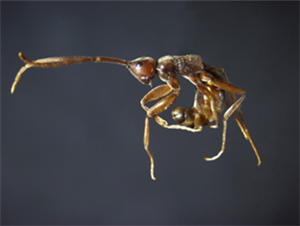
PhD study using new canopy access equipment
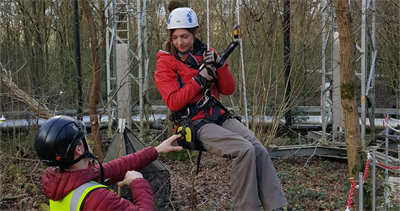
John Horseman Trust funded, BIFoR PhD student Anna Gardner has joined the current team of 8 PhD students. Anna is using the recently installed, unique system to access different levels of the tree canopy. The system can be used without prior training and allows researchers to spend time in the top most canopy. Anna will be investigating the effect of elevated CO2 on leaf-level photosynthesis by measurements of gas exchange, stomatal conductance and chlorophyll content.
Green Infrastructure
The beginning of the year has been busy with promoting the First Steps in Urban Air Quality. A Trees and Design Action Group (TDAG) Guidance Document report. It is available from: http://epapers.bham.ac.uk/3069/
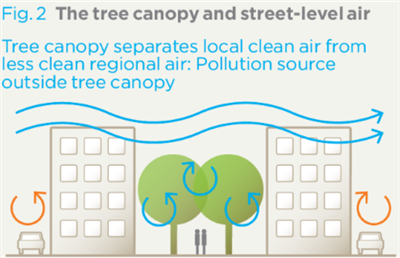
Bringing the Forest to the Classroom
BIFoR FACE was “switched-on” for the 2018 growing season on 27 March 2018. Dr Rick Thomas and Prof Jerry Pritchard went to the University of Birmingham School, where year 12 geography pupils learnt about the BIFoR FACE facility and witnessed the switch-on via a live video link up. Students also saw live data streams and had a lively discussion about how BIFoR science connects to their curriculum. Students also experienced a new 360 tour of the research woodland developed by Rick and supported by the University of Birmingham Alumni Impact Fund.
You can see the video below or on the University of Birmingham YouTube Channel; go to the BIFoR Playlist.
BIFoR Sci-fi Forest 360 Tour
Our new 360 degree video about the Birmingham Institute of Forest Research (BIFoR) Free-Air Carbon Enrichment (FACE) Facility,
Research highlight: Using drones to understand the impact of
riparian tree shading on stream temperature
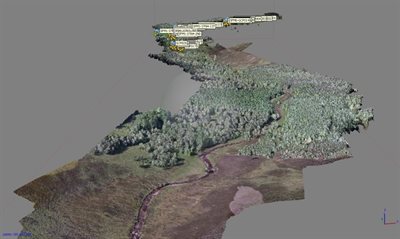
GEES researchers (Steve Dugdale [Marie Curie Fellow] and David Hannah) working in conjunction with Marine Scotland Science (MSS, Iain Malcom) have developed a novel technique for quantifying the impact of riparian tree cover on river temperature. River temperature is highly important to a range of freshwater organisms, and there are concerns that climate change could render rivers too warm for native UK fish species (notably Atlantic salmon and brown trout). As a result, river managers across the UK are planting trees in an attempt shade rivers during the hottest parts of the day.
However, understanding the exact effects of riparian woodland on stream temperature requires precise information on tree cover; but these data can be difficult or costly to obtain, especially in remote locations. To address this key research problem, Birmingham and MSS researchers have developed a new drone-based methodology to quantify the impact of riparian shading on stream temperature. By generating a highly accurate 3D tree height map using ‘structure-from-motion’ photogrammetry (fig 1 above right), and integrating the resulting tree height data into an river heat budget model, it is possible to quantify the extent to which riparian tree shading moderates water temperatures in a given location (fig 2 below). This innovative approach has the potential to shed light on how and where tree shading produces optimal stream temperature reductions. It is intended that this research will furnish river scientists and managers with a new tool with which to combat the threat of climate change to sensitive river environments.
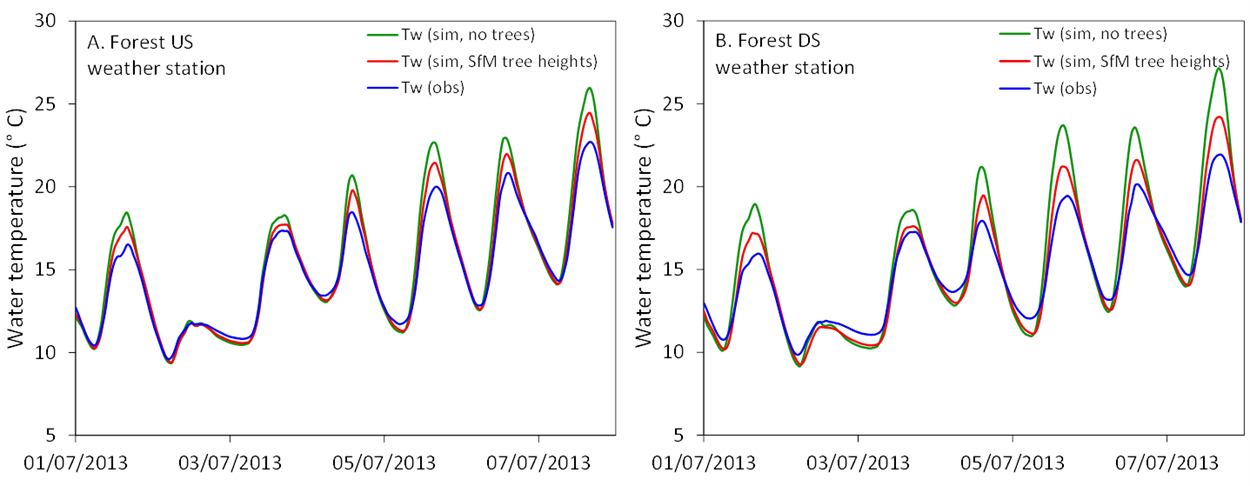
Figure 2. Energy balance model of stream temperatures in Girnock Burn, Scotland showing stream temperature with (red) and without (green) tree cover at two locations. Model shows that riparian tree cover reduces stream temperature by >3 °C during warm summer days.
Student Engagement
Undergraduate students and masters students have been busy supporting BIFoR with our research. Funding from the Alumni Impact Fund will help us embed this culture of volunteering with BIFoR in future years. We’re delighted that over 400 hours of volunteering have already been completed since September 2018.
Van Zhang, one of our volunteers, said, “Volunteering with BIFoR has been a great chance to participate in some world-leading research, which turned out to help my Master application dramatically.”
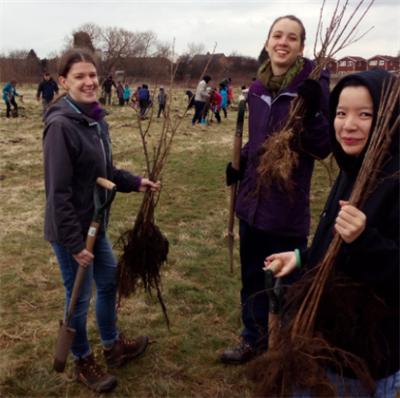
Students from the BIFoR Network helping with tree planting organised by Birmingham Trees for Life.